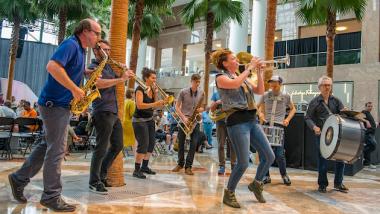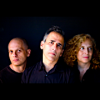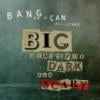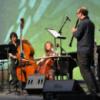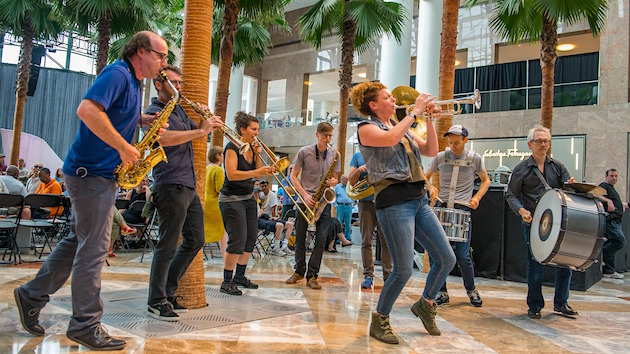
This is Part II of Allan Kozinn's profile of new-music pioneers Bang on a Can. Read Part I here.
With a structure in place, anything was possible, and tendrils sprang rapidly. Most notably, a house label, Cantaloupe, was created. Initially a home for the All Stars’ recordings (collectively and individually, along with projects by several former members), and for works by Lang, Wolfe, and Gordon, it quickly expanded to include the work of a growing list of composers — among them, Phil Kline, Arnold Dreyblatt, Tristan Perich, Florent Ghys, Ted Hearne, Don Byron, Glenn Kotche and John Luther Adams — and ensembles like Alarm Will Sound, Ethel, Gutbucket, So Percussion, Sentieri Salvaggi, and Icebreaker. In its first 16 years, the label has released nearly 125 albums.
Other long-running projects also blossomed under the Bang on a Can umbrella. One is the People’s Commissioning Fund, a grassroots, donate-what-you-can program that has raised enough money to commission at least three new works a year since 1997. The works are given premieres in an annual All-Stars concert.
Another is Found Sound Nation, an educational and social action program in which the organization sponsors projects for at-risk youth, who are given the tools to create, record, edit and produce new works, using the techniques of hip-hop and musique concrete. The program, which started at a school in the Bronx in 2007, has gone international, with projects in Indonesia, Zimbabwe, and Switzerland.
A third spinoff is the Asphalt Orchestra, an avant-garde marching band, formed in 2009 to play a quirky mix of new music (including works commissioned for it) and pop transcriptions. Among its more notable projects is its recording of its version of the Pixies’ entire Surfer Rosa album.
And then there’s the Bang on a Can Summer Festival, presented since 2001 at MASS MoCA, in North Adams, MA, and popularly known as Banglewood, thanks to its proximity to Tanglewood, the Boston Symphony’s summer home in the Berkshires. A three-week immersion for young composers and ensembles, as well as new-music fans, the festival fills its days and nights with seminars, rehearsals, and concerts, as well as a six-hour marathon.
“The main outlet for us now, in terms of supporting young composers, is the Summer Festival. It’s a little utopia. We’re all very passionate about this. It’s nice for us to meet them, and for them to meet us. They get the idea, the spirit of what we do, and they go out and start festivals and ensembles of their own.”
Through all this, the three composers who formed the organization have composed steadily and plentifully, and they have made their mark: Lang and Wolfe have both won the Pulitzer Prize for Music, Lang for The Little Match Girl Passion, in 2008, Wolfe for Anthracite Fields, in 2015. The vicissitudes of prize panels being what they are, it’s hard to predict whether a future Pulitzer jury will turn its attention to Gordon, but he has been an equally prolific, inventive, and often amusing composer, with tactile soundscapes (Timber and Rushes), operas (Aquanetta and Van Gogh) and orchestral works (Dystopia and Deconstructing Beethoven’s Seventh Symphony) to his credit.
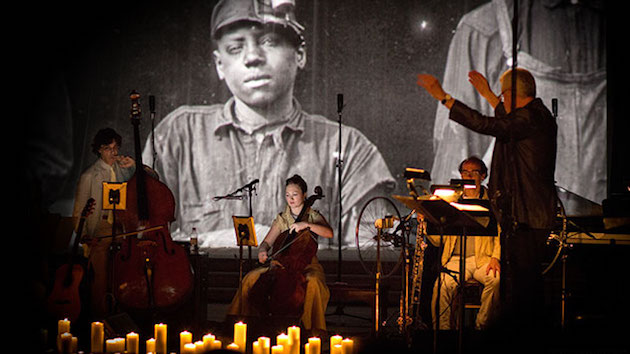
Gordon, in fact, had a band of his own, the Michael Gordon Philharmonic, that was a precursor of the Bang on a Can All-Stars and other ensembles in which young composers have mixed rock and classical instrumentation, to play music that draws its influences from both genres. The group appeared at the the first marathon, in 1987, playing Gordon’s Strange Quiet, and released an eponymous debut album (on Neutral Records) the same year. Like the All-Stars, it included an electric guitar, keyboards, and drums, as well as strings and winds, with original, All-Star wind virtuoso Evan Ziporyn among its members.
For anyone paying attention, Gordon’s band was a sign of where a particular strain of new music was headed. All three Bang on a Can composers were born in the mid-to-late 1950s (Gordon in 1956, Lang in 1957, Wolfe in 1958), and like most musicians of their generation, and those that followed, they grew up as musical omnivores, as open to rock, folk, blues, R&B, and jazz as they were to classical music. Gordon, for one, played keyboards in a rock band. When they studied music formally, they saw no reason to disown their interest in pop, but rather, to use it as part of their compositional toolkit. Similarly, they were not partisans in the style wars and subsidiary skirmishes (tonality vs. post-tonality, Serialism vs. Minimalism, acoustic vs. electronic, composed vs. found sound) that divided the new-music world — hence the inclusion of music by Babbitt and Xenakis in the first marathon program.
Still, even a decade before the founding of Bang on a Can, finding ways to blend pop and classical influences was difficult. It had been happening in the pop world for some time, by way of experimental art-rock bands like King Crimson, Yes, Faust, Tangerine Dream, and other groups that used unusual (and often mixed) meters and a harmonic language that marked their work as music to delve into, rather than to dance to.
On the classical side, composer-led chamber groups like the Philip Glass Ensemble, which built its early sound around the wheezy timbre of the Farfisa organ (a staple of garage bands everywhere), or Steve Reich and Musicians, who used percussion as the engine from which thematic material, structure, and other elements of Reich’s musical fabric emerged. David Borden, working around the same time, formed Mother Mallard's Portable Masterpiece Company, with synthesizers and amplified keyboards as its heart.
Occasionally, older composers writing in more traditional styles, included an electric guitar in a score. But they tended not to know much about the instrument’s capabilities, or the range of sound-shaping pedals and other devices rock guitarists were using, so their electric guitar lines mostly sounded like amplified acoustic guitars. It took the emergence of composers like the Bang on a Can trio, Steve Mackey, Glenn Branca, John King, and Scott Johnson — and players like Mark Stewart, who can play anything you put in front of him, and doubles on banjo, dulcimer and instruments of his own invention — to inject the energy and color of rock into classical scores. And it took adventurous classical instrumentalists like Maya Beiser to look into what the pedals and other devices prized by guitarists could do for orchestral instruments.
Not that Lang, Wolfe, Gordon and their friends were working alone. The marathons brought together like-minded young musicians from everywhere — groups like Icebreaker, the California E.A.R. Unit, the turntablist Christian Marclay, the accordionist Guy Klucevsek, the World Saxophone Quartet, which is either a jazz or classical ensemble, depending on your perspective, or David Rosenbloom’s Electric Chorus and Orchestra, with its combination of voices, winds, synthesizer, electric guitar, and bass — as well as conventional groups, like the Alexander String Quartet.
What they tapped into, though, was a pair of increasingly crucial currents in new music. One was young composers’ realization that they were unlikely to luck into orchestral commissions early in their careers, and that if they wanted their music heard, they had to focus on works for small ensembles, instead. The other was that if they wanted a free hand to experiment, they should form ensembles of their own — groups in which players and composers had a rapport that made both sides eager to push each other’s abilities, and where new ideas could be tried out while the score was in progress.
When a composer gets famous enough, of course, the orchestral commissions begin to come. Lang, Wolfe, and Gordon have all composed symphonic works, and they say they enjoy it. But it’s a decidedly different experience than writing for the All-Stars.
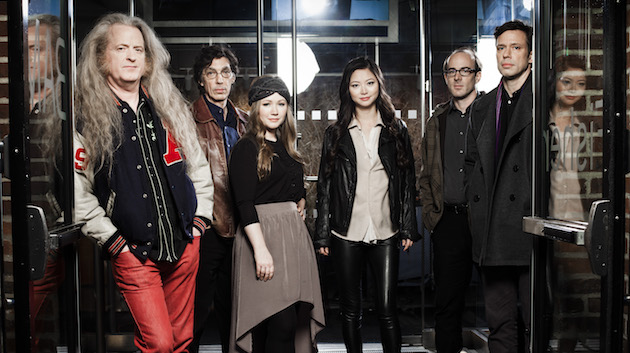
“With the All-Stars,” Wolfe says, “their musicianship is very broad, they can do anything. There’s no question it’s my favorite group to write for. I love writing for string orchestra, and all kinds of combinations of instruments, but when I’m writing for the All-Stars, I know my imagination can go anywhere, and there’s not even subconscious restraint. They’re game to try things out.
“With every piece I do,” she adds, “it’s got to be a challenge — it always has to be, ‘how am I going to do that?’ I don’t want to write an orchestra piece that sounds like an orchestra piece, but whether I’ll be successful is another question. There can be an impulse to conform, because it’s a conservative world, and they’re not necessarily asking you to step out — and if you do, they’re not going to jump up and down, all excited because you did. But that’s what I’m into — it’s what we’re all into. It’s an interesting challenge, to go to some unknown place, while struggling to do that with 100 people on stage. At the same time, it’s not the same flexible thing the Bang on a Can All-Stars is. I wouldn’t want to move into that world full-time.”
For Gordon, too, writing for orchestra is like stepping into a different universe. “It’s all the toys on one stage,” he said, “and the orchestra is brilliant at this kind of communal sensibility. They’re virtuoso sight-readers, and they somehow instantly come to an agreement about how to play together and make music. I find that fascinating.
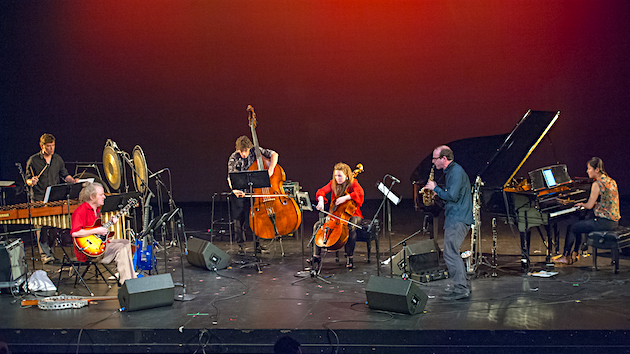
“But it’s also definitely a more formal, distant experience. If I write for orchestra, I feel like an architect who designs a building. I’m very excited to see the building go up, but I never talk to the people with the hammers or bulldozers, who are doing the day to day work. When an orchestra plays a piece of mine, when I come home, I realize that I had this experience, and I took a bow, but I never spoke with a single musician. It’s an entirely different experience from being in a room with the Kronos Quartet, the Bang on a Can All-Stars, or any of these groups.”
Lang has a somewhat different perspective. “What I love about the All-Stars is that their combination of instruments never existed before, so all the pieces we commission for them, or that we write ourselves, are building a repertoire from the ground up. With an orchestra, one of the things I really like is feeling the history of all of the other composers who have written for it. I know the repertoire really well, but I also want to understand who the people who composed that repertoire were, and I have the feeling that if I do something in an orchestral piece, I understand a little better how Mozart or Beethoven thought. And it excites me to have access to that part of the music world.”
Lang notes, as well, that although orchestras are generally conservative, ensembles like the San Francisco Symphony and the Los Angeles Philharmonic, which program more new music than many others, are using composers and new works to build young, enthusiastic audiences. He sees this as an application of the Bang on a Can model, which, as he puts it, is that “if you build a bigger doorway for people to come through, then people will come through it. There are people paying attention to that, and I think that’s a way forward for the orchestra world.”
What do the Bang on a Can’s founders see for the organization’s next 30 years?
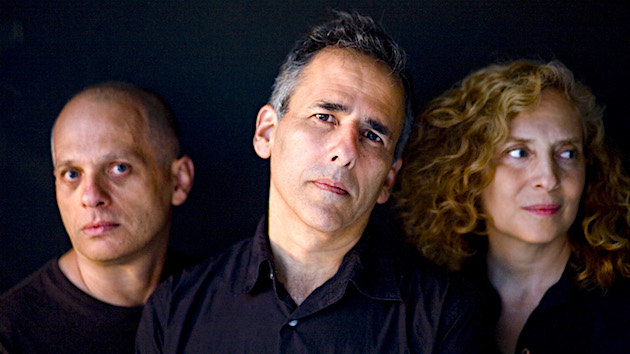
“I don’t know that we have a 30-year plan,” Gordon says, “but I don’t think we’ve slowed down, and I don’t think we’re any less enthusiastic or energetic. I’m excited to be living right now, because I think the world has changed, and there’s a lot of energy. I know that on an anniversary, you’re supposed to be reflective and feel that marker, but I don’t feel that way; I just feel like, what are we doing today, or tomorrow, or next week?”
That said, Gordon and his colleagues take pride in having shown that the outsider tradition in classical music can be a substantial career path.
“Here in the United States,” he says, “we have the examples of Harry Partch, Conlon Nancarrrow, and even John Cage — outsider artists who we don’t think of as outsiders because they’re so important to us, but who lived their lives beyond the mainstream of the classical music establishment. And I think the real question today is no longer ‘how do I get every big orchestra to play my piece?’ It’s very reasonable, now, for someone to live their entire life, and have a fulfilling and enriching career, outside that established classical world. That’s a great message. And I love the idea that all these young composers and performers, they’re optimistic, they’re a lot more realistic — and they’re a lot nicer to each other.”
“We really think we’ve had something to do with that,” says Lang, to which Gordon quickly adds, “That’s what we want credit for.”

